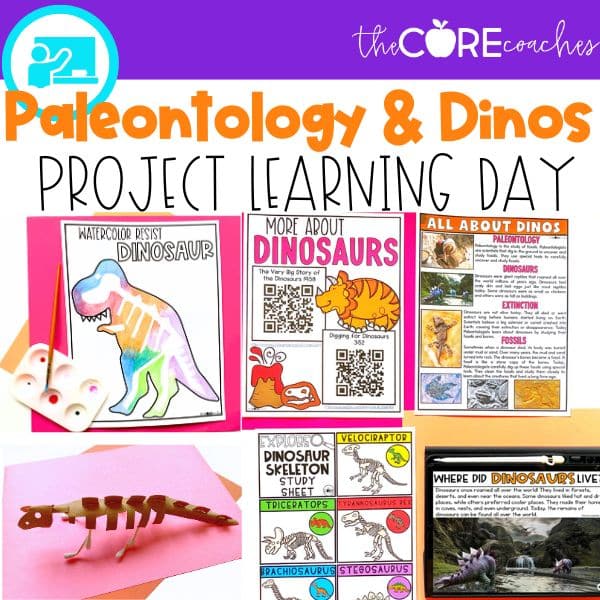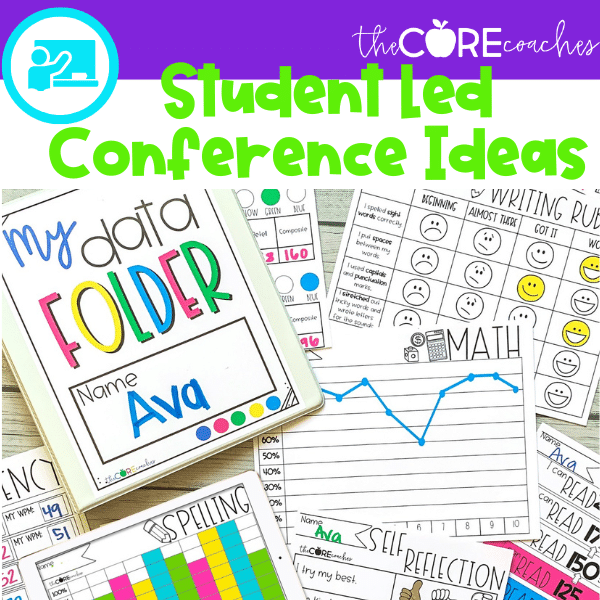Comprehension questions are an essential part of learning. In EVERY subject area! Asking comprehension questions is not just for language arts. Any area of learning that requires students to understand (comprehend) an idea, needs comprehension questions.
As an elementary school teacher, this can feel like a blessing and a curse. On one hand, knowing that comprehension questions are helpful in all subject areas helps you to plan lessons. However, it can also feel overwhelming to have to create comprehension questions for so many different texts.
Don’t worry, we’ve got you covered! We have put together several text dependent questions for you. These are questions that you can use for ANY text. In addition, we have also provided some tips on how to write your own comprehension questions.
What are comprehension questions?
Comprehension questions are questions used to check for understanding. They are specifically used with different types of texts. Traditionally, this would be a written text like a book. However, in today’s modern world a text could also consider a video a text. You could even use comprehension questions with visual art!
We are all familiar with basic comprehension questions used for fictional stories. Examples of these questions may be “who is the main character?” or “what is the setting.”
Now, we love a good story book as much as every elementary teacher! Read aloud time was our favorite time of day when we were in the classroom. However, while read alouds are important to language development and 1st grade reading comprehension, they are not the only type of texts students need to access.
Why Are Non-fiction Texts Important?
Accessing non-fiction 1st grade reading comprehension passages is essential to student learning. Non-fiction texts support language development, teach higher order thinking, and help students gain an understanding of real world experiences.
Another reason we encourage teachers to use non-fiction texts in the classroom is that it makes planning easier for you! Unlike read aloud books that need text specific questions, you can use the same questions for almost all non-fiction texts!
Therefore, once you have a set of comprehension questions created you can quickly pick and choose which ones to use for ANY text and guess what? You can even use these same questions for story books!
Different Types of Comprehension Questions
Like fictional stories, there are different levels of comprehension questions. Most questions fall into two categories: literal and inferential.
Literal comprehension questions have a clear right or wrong answer. The correct answer can be found explicitly stated in the text. For example, in a picture book, you may ask the students “where does the character live?” Depending on the book, it may explicitly state that the main character lives in a specific location (such as a house, street, or city).
In addition to literal questions, there are inferential comprehension questions. Inferential questions are still answered using the text. However, the answer is not explicitly stated. Students have to read between the lines to find the answer. These are the types of questions that engage students’ critical thinking.
Both literal and inferential questions are necessary for comprehension. Literal questions are essential to building basic reading skills and help students understand the basics of a text. Inference questions are essential for helping students develop critical thinking skills.
Specific Types of Comprehension Questions
Within these two broad categories of literal questions and inferential questions are several types of text dependent questions. Take a look at some examples of specific types of comprehension questions listed below.
- Cause and effect
- Compare and contrast
- Fact and opinion
- Point of view
- Sequencing
- Main Idea
- Theme
5 Examples of Reading Comprehension Questions
You can use the different types of questions listed above as a guide to write your own questions. However, we know how busy you are! Therefore, we are going to save you some time by giving you examples of some comprehension questions you can use in any text.
- Who is the author of this text?
Asking students to name the author of the text is an important literal question. While it is a basic question, it requires students to look at the text to find the exact answer. Moreover, it teaches students where to look for this information.
This provides you as the teacher with even more content to explore! You can teach students where to look for an author’s name in a picture book and how that is a different location than in a news article.
Beyond the basic identifying question, you can add “what information does the author teach you?” This is a great way to extend the question and encourage students to dig deeper into a text.
- What is the main idea of this part of the text?
Identifying the main idea of a text is a standard comprehension question and with good reason! If a student doesn’t understand the main idea of a text then it will be difficult to understand other parts of the text. Therefore, it is important to always check in with the main idea.
As you can see from this question, there are also ways to expand this question. Usually, we only look at the main idea of a whole text. However, you can also ask students to look for the key ideas throughout the text. Looking for key ideas in smaller sections helps in building understanding along the way.
- How are these two people the same?
This question is a good example of an inferential question. The text (most likely) does not explicitly state how these two people are the same. Therefore, the students must first look at each person individually.
They must ask themselves, what is this person like? Then, ask themselves what is this second person like? Once they have a good understanding of each person then they can compare the similarities.
This question can also be changed to ask “how are these two people different?” With this one simple change, you have another question to ask!
In addition, you can easily modify this question in other ways. For example, instead of comparing and contrasting people, you can ask students about events or ideas.
- How are these two events the same?
- How are these two events different?
- How are these two ideas similar?
- How are these two ideas different?
As you can see, these simple changes create brand new questions. Moreover, you can see how these questions can be used in any text!
You may also notice that you can use these same questions multiple times throughout the text. One basic question stem provides you with a comprehension activity for any text!
- What do you think this word _______ means?
This is a wonderful question to introduce vocabulary! It is also a question that you can use A LOT!
By asking students what they think a word means, before telling them, you give them ownership of their learning. Moreover, you give them the opportunity to tap into their higher order thinking skills.
Introducing vocabulary in this way not only enhances understanding of the text as a whole, but helps students retain an understanding of individual words. It can even be a fun way to review a sight words!
- What does the front cover of the book tell us?
Earlier, we mentioned how a text doesn’t have to be written, but that it can also include visual content. This question is a great way to explore visual content.
A question like this encourages students to look closely at an image in the same way they would look closely at the written text. In addition, it also helps them make additional connections with the written text. This further enhances their overall comprehension of the text as a whole.
Ready to Use Comprehension Questions
Since comprehension questions are so important for student learning they need to be used every day. Above, you have over 5 ready to use comprehension questions!
We know that as teachers the more you have ready to go, the better. Therefore, we put together several additional reading comprehension questions for K, 1st, and 2nd grades. These comprehension questions will help you ask questions that cover ALL of the informational and literature standards for Kindergarten, 1st grade, and 2nd grade! Moreover, they are great prompts to facilitate discussions that encourage higher order thinking.
These questions also provide you with a variety of question types. So, while many questions are important to ask for each text you can also change up the questions if you want. This supports you in adding variety to your lessons in a simple way.
You can find ALL of these questions in one easy to access resource Comprehension Questions for ANY text.
The best part? Once you purchase these questions you can use them not only for ANY text, but for ANY grade level! So, while you may use these comprehension questions for first grade this year, you could use them for kindergarten or second grade another year.
How to Use Comprehension Question Stems
Prep is quick and easy with our Comprehension Questions for ANY text resource. You can either use the easy to print reference sheets or print the questions on sticky notes.
We LOVE the sticky note option because you can place sticky notes directly on the pages of a book or article. Therefore, when you are reading your questions are already exactly where you want them to be.
In addition, the sticky notes help to break up a text by asking frequent questions. This helps students to stay focused and engaged. Another important aspect of comprehension!
6 Additional ways to improve reading comprehension
Make connections
When students make connections between a text and something they are already familiar with it reinforces their understanding of the new concept. Text-to-self connections, text-to-text connections, and text-to-world connections are three great ways to further improve students’ reading comprehension.
Visualize
If using a text that does not have visuals, ask students to close their eyes are imagine different parts of the text. For an informational article, this may be asking students to visualize the setting. This strategy helps students make their own personal connections that can further support comprehension.
Draw
Drawing is a fun addition to the visualization process. Once students have imagined a part of the text, give them paper to draw what they saw! Again, this helps students to make their own personal connections. Moreover, this is a great strategy to engage students who are visual and tactile learners.
Take Brain Breaks
Learning is not all about doing! Students need time to slow down and process information. Giving them time for brain breaks is a great way to support them in their learning process. A brain break can be everything from a 1 minute stand and stretch to a guided mindful movement.
Check out some of our favorite brain breaks in our Mindfulness Movement Activities – Brain Breaks – Social Emotional Learning SEL resource!





